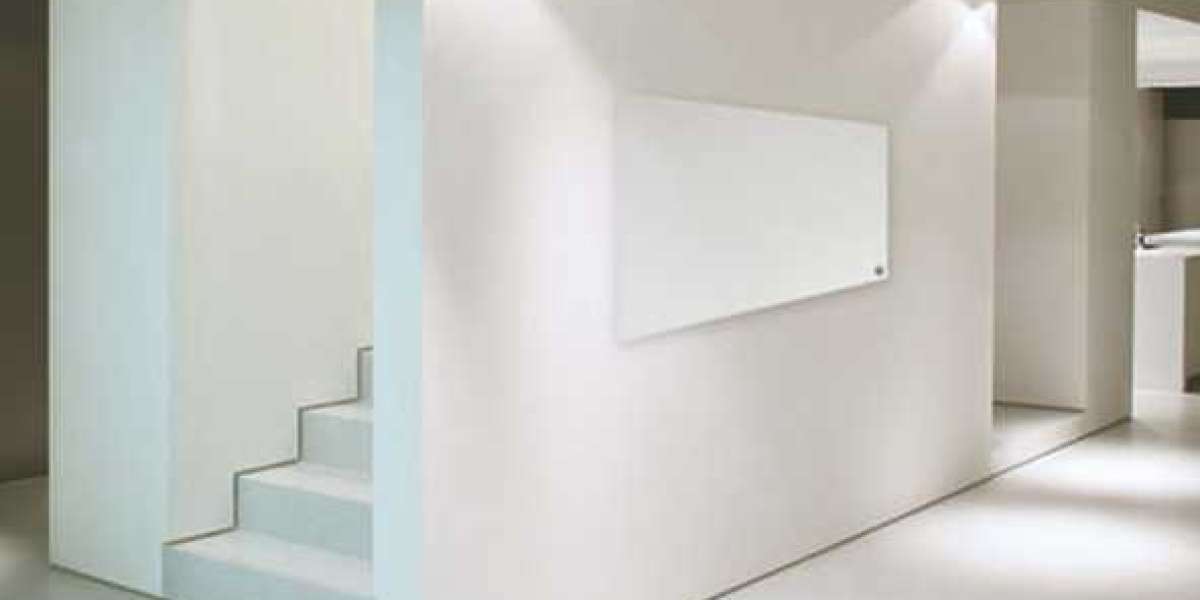In an era where energy efficiency is more crucial than ever, the quest for sustainable living solutions has led many homeowners to explore innovative technologies. One such solution that stands out in the realm of eco-friendly construction is the Passive House Heat Exchanger. This remarkable system not only boosts comfort but significantly reduces energy consumption, making it a game-changer for those looking to create a healthier living environment while cutting down on utility bills. Whether you're building new or retrofitting an existing property, understanding these systems could put you on the path toward achieving true energy independence—while also doing your part for our planet.
Understanding Energy Efficiency and Its Importance
Energy efficiency is a crucial component of sustainable living. It refers to using less energy to perform the same task, which directly impacts our environment and utility bills. By reducing energy consumption, we can lower greenhouse gas emissions significantly. This not only helps combat climate change but also conserves valuable resources for future generations.
Investing in energy-efficient systems like passive-house heat exchangers promotes long-term savings. Homeowners can enjoy reduced heating and cooling costs while maintaining comfort levels throughout the year. Increasing awareness around energy efficiency encourages innovative solutions in building design and technology. As more people recognize its importance, we move closer to creating eco-friendly communities that prioritize sustainability and resilience against changing climates.
How Passive-House Heat Exchangers Work
Passive-House heat exchangers are designed to optimize indoor air quality while minimizing energy loss. They operate on a simple, yet effective principle: transferring heat between incoming and outgoing air streams. As stale air exits the home, it passes through the heat exchanger. This component captures warmth from the outgoing air and uses it to preheat fresh, cold air entering the living space. The result is a balanced exchange that maintains comfortable temperatures without excessive energy use.
These systems often incorporate filters to remove pollutants from incoming airflow. This ensures that residents breathe cleaner air while benefiting from decreased heating needs during colder months. Moreover, passive-house heat exchangers can work effectively in various climates, adapting their efficiency based on external conditions. Their smart design makes them an essential part of sustainable building practices aimed at enhancing energy efficiency in homes today.
Factors To Consider When Choosing a Heat Exchange System for Home
Choosing the right Heat Exchange System For Home involves several key factors. First, consider the size of your space. A system too small won’t provide adequate heating or cooling, while one that’s too large can lead to inefficiencies. Next, evaluate energy efficiency ratings. Look for systems with high Energy Star ratings to ensure optimal performance and cost savings on energy bills.
Air quality is another critical aspect. Select a heat exchanger that includes filtration options to improve indoor air quality by removing dust and allergens. Also, think about maintenance requirements. Some systems demand more frequent servicing than others; understanding these needs can save time and money down the road. Factor in installation costs versus long-term benefits. While upfront expenses may vary significantly, investing in a reliable unit pays off through lower utility bills over its lifetime.
Installation Process and Maintenance Tips
Installing a Passive-House heat exchanger requires careful planning and execution. Begin by ensuring proper sizing for your specific space. An incorrectly sized unit can lead to inefficiencies. Positioning is crucial. Ideally, place the unit in an accessible location for both maintenance and operation. This makes future servicing much simpler.
While installation may seem daunting, hiring a professional experienced with Passive-House standards can streamline the process significantly. They understand intricate building codes and efficiency measures that ensure optimal performance. Regular maintenance enhances longevity and efficiency. Cleaning filters every few months helps maintain airflow quality. Keep an eye on any unusual sounds; they could indicate issues needing immediate attention. Check ductwork connections periodically to avoid leaks that compromise energy savings. Staying proactive about upkeep ensures your system runs smoothly for years to come without unnecessary expenses or hassle.
The Role of Heat Recovery Ventilation in Passive Houses
Heat Recovery Ventilation (HRV) plays a crucial role in the efficiency of passive houses. It ensures a continuous flow of fresh air while minimizing energy loss. This system captures heat from the outgoing stale air and transfers it to incoming fresh air, maintaining comfortable indoor temperatures. With airtight construction being a hallmark of passive homes, proper ventilation is essential. HRV systems help regulate humidity levels and improve indoor air quality by filtering out pollutants and allergens.
By recovering heat that would otherwise be wasted, these systems significantly reduce heating costs during colder months. The result is an eco-friendly solution that aligns with sustainable living principles. Moreover, residents experience consistent comfort without sacrificing energy efficiency or compromising their health. Investing in HRV technology enhances both functionality and sustainability in any passive house design.
Design Considerations for Installing a Heat Exchange Ventilation
When designing a heat exchange ventilation system, space planning is essential. The layout should accommodate ductwork and ensure optimal airflow without obstructions. The location of the heat exchanger plays a crucial role. It needs to be easily accessible for maintenance yet discreet enough not to disrupt the aesthetics of your home. Consider the orientation of your home as well. South-facing installations can take advantage of solar gain while minimizing energy loss during colder months. Here are bullet points outlining design considerations for installing a heat exchange-ventilation (HRV/ERV) system:
Proper Sizing Based on Occupancy and Air Volume
Accurately calculate the required airflow rate based on the number of occupants, the size of the building, and local building codes. An undersized system won't provide adequate ventilation, while an oversized one can led to energy waste and discomfort.
Strategic Ductwork Design and Layout
Plan the ductwork system carefully to ensure balanced airflow throughout the building with minimal resistance and heat loss/gain. Consider the shortest possible runs, smooth bends, and proper insulation of ducts, especially in unconditioned spaces.
Optimal Location of Intake and Exhaust Vents
Position fresh air intake vents away from potential sources of pollutants like exhaust fumes, dryer vents, and garbage areas. Locate exhaust vents in areas with high moisture and pollutant levels, such as kitchens and bathrooms, ensuring proper airflow patterns within the building.
Accessibility for Maintenance and Filter Changes
Design the installation with easy access to the HRV/ERV unit and its components, particularly filters, for regular maintenance and replacements. Consider leaving sufficient clearance around the unit for servicing and ensure duct connections are accessible for cleaning if needed.
Maintenance And Longevity of Passive-House Heat Exchangers
Regular maintenance is key to ensuring the longevity of passive-house heat exchangers. These systems depend on clean filters and unobstructed airflow. Scheduling routine inspections can prevent minor issues from escalating into costly repairs. Replacing or cleaning filters every few months keeps efficiency high. Remember, dust and debris can diminish performance significantly over time.
Inspecting ductwork for leaks is another essential step. Any gaps can lead to energy loss, undermining the system's effectiveness. Pay attention to condensate drains as well; they should be clear to avoid water damage or mold growth in your home. Keeping an eye on fan operations ensures optimal functioning too. If you notice unusual noises or decreased airflow, it may signal a need for servicing. With proper care, a passive-house heat exchanger can serve efficiently for many years, making it a sound investment in energy conservation and comfort.
Comparing Heat Exchangers in Passive House Vs. Conventional Buildings
Heat exchangers play a crucial role in energy efficiency, especially when comparing passive houses to conventional buildings. In passive homes, the design prioritizes airtightness and insulation. This allows heat exchangers to operate more effectively. Conventional buildings often rely on traditional heating and cooling systems that can waste energy. They might not utilize heat recovery processes as efficiently as passive designs do. As a result, they miss out on potential savings.
Passive-house heat exchangers are engineered for optimal performance with minimal energy loss. These systems continuously recycle indoor air while maintaining comfortable temperatures without relying heavily on external sources of heating or cooling. This fundamental difference highlights how integrating advanced technology into building practices can lead to substantial differences in overall energy consumption and environmental impact between the two types of structures.
Challenges In Installing a Heat Exchanger Vent
Installing a heat exchanger vent presents several challenges that homeowners and contractors must navigate. One of the primary hurdles is ensuring proper sizing. An incorrectly sized unit can lead to inefficient performance, negating the benefits of energy recovery. Another obstacle is the placement within existing structures. Many homes have limited space or awkward layouts, making it difficult to install ductwork without compromising aesthetics or functionality.
Additionally, older buildings may lack adequate insulation or airtightness, which can undermine the effectiveness of a heat exchanger system. Retrofitting these properties often requires significant modifications. Balancing airflow is crucial for optimal performance. Achieving this balance demands careful planning and precise adjustments during installation—a task that can be daunting for inexperienced installers. These challenges highlight the importance of skilled professionals in executing an effective installation process.
Future Trends in Heat Exchange Technology for Passive Houses
The future of heat exchange technology in passive houses promises exciting innovations. Companies are focusing on integrating smart home systems with heat exchangers. This allows for real-time monitoring and adjustments based on occupancy patterns and weather conditions. Energy recovery ventilators (ERVs) are evolving too. They’re becoming more efficient, utilizing advanced materials that enhance thermal conductivity without increasing energy consumption.
Sustainable practices will also shape the industry. Expect to see an increase in the use of recycled materials in manufacturing these systems, aligning with broader eco-friendly goals. Furthermore, modular designs are gaining traction. These can be tailored to fit various architectural styles while optimizing airflow and efficiency. User experience is a priority as manufacturers design interfaces that make operation intuitive for homeowners, ensuring maximum benefits from their investment in energy-efficient technologies.
Conclusion
Energy efficiency is not just a trend; it’s a necessity. The role of Passive House Heat Exchanger in creating sustainable living environments cannot be overstated. By harnessing natural resources, these systems optimize energy use while enhancing indoor air quality. Homeowners can significantly reduce their carbon footprint and utility bills through smart design choices. Embracing this technology promotes a healthier lifestyle and supports environmental goals. As more people seek efficient solutions, the demand for innovations in heat exchange systems will only grow.
FAQs
What is a Passive House Heat Exchanger?
A Passive House Heat Exchanger is an advanced system designed to recover heat from outgoing air and transfer it to incoming fresh air without mixing the two streams. This technology helps maintain indoor temperature while minimizing energy loss.
How does installing a heat exchanger impact my home’s energy bills?
By efficiently recovering and reusing thermal energy within your home, a passive-house heat exchanger can greatly reduce heating and cooling expenses, resulting in significant savings on monthly utility bills.
Are there specific maintenance tasks for these systems?
Yes, regular maintenance includes cleaning or replacing filters, checking ductwork for obstructions, and inspecting fans to ensure optimal performance of the heat recovery ventilation system.
Can I install a passive-house heat exchanger myself?
While some basic skills may allow you to undertake installation as a DIY project, it's recommended to hire professionals who specialize in HVAC systems for proper setup and compliance with local regulations.
Related Business Listings |








